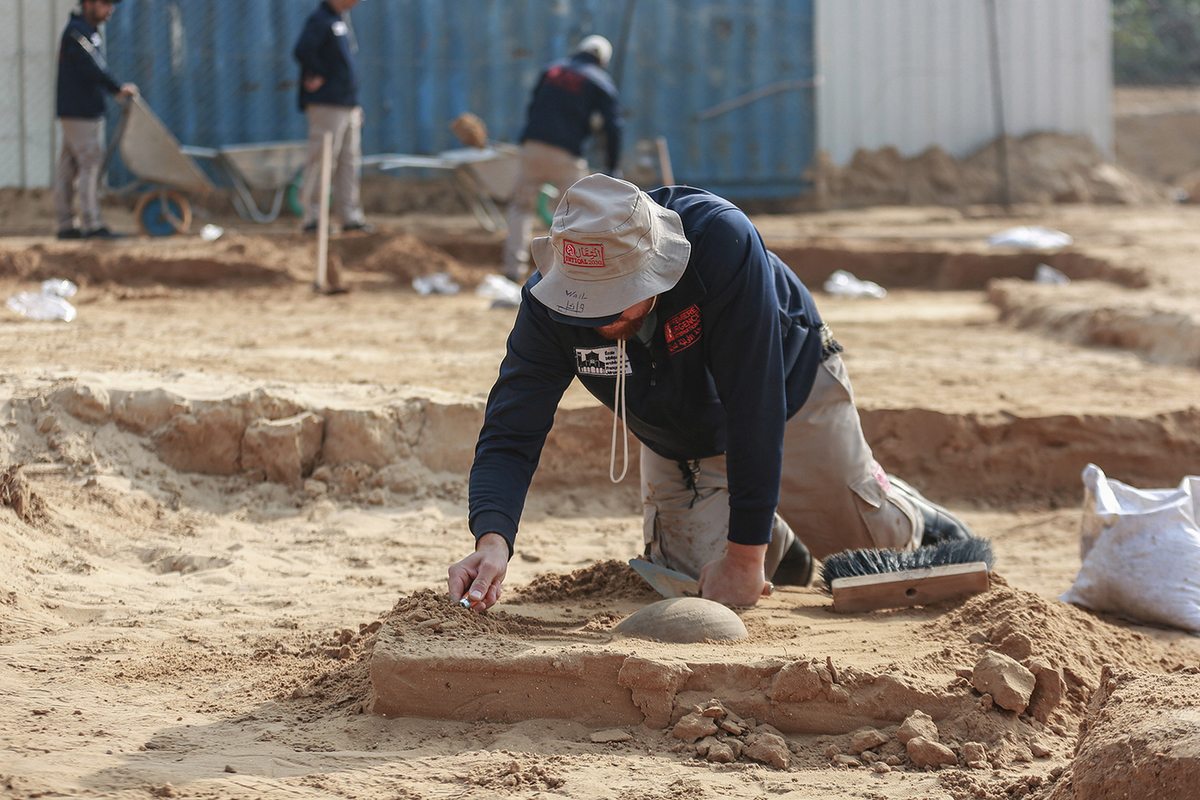Scientists have restored a unique necklace found in an ancient children’s burial
[ad_1]

More than 2,500 multi-colored stone and shell beads were found in the tomb, dated to between 7400 and 6800 BC, according to CNN. Archaeological excavations have been carried out in the 9,000-year-old village of Baia, near the ancient city of Petra, since 1997.
In 2018, researchers discovered the grave of an 8-year-old child buried in the fetal position. The child’s chest and neck were covered with thousands of beads, and a perforated stone pendant and mother-of-pearl ring were also found.
The team of archaeologists carefully documented how the beads were distributed throughout the grave and determined that they were once part of a larger piece of jewelry that fell apart over time.
Genetic analysis of the poorly preserved remains revealed nothing about the child’s health, cause of death, dietary habits, or biological identity. Instead, the researchers focused on the beads and the story they could tell about the child, as well as Neolithic burial rites.
A study detailing the results was published today in the journal PLOS ONE.
“Our goal was to challenge the degradation over time and rethink the original composition in order to best explore the meaning of this symbolic category of material culture, not as a simple group of beads, but as a decorative creation with further aesthetic, artisanal and socio-economic implications”, – write the authors of the study.
The set of tubular, flat and disc-shaped beads was mainly made of red calcite, but also hematite, turquoise and sea shells. The researchers noticed that the dominant color scheme appeared to be red and white, while other materials produced shades of contrasting colors. There were also two amber beads, “unprecedented material never before attested for this period,” according to the study.
The shells collected from the Red Sea and some of the stone beads were not native to the area, suggesting they were acquired through cultural exchange, CNN notes. The article suggests that Neolithic society included interactions between merchants, skilled artisans, and people of high status who may have commissioned such designs.
A worn, flat, oval-shaped piece of hematite was found to be a spacer or buckle that once fastened the piece around the neck, while the shattered remains of a four-branched mother-of-pearl ring were identified as the centerpiece of the necklace. When the ring was found, it still had several balls of disks attached to it.
The wear patterns on some of the turquoise and hematite pieces suggest they may have been incorporated into the design after being used by other, possibly older children, the researchers said.
The team carried out a lengthy, detailed analysis of the beads, studying their composition and craftsmanship to determine how they could fit together. Ultimately, after trying several configurations, they determined that the rows of beads diverge on either side of the mother-of-pearl ring, covering the wearer’s neck and chest. Seven rows were connected to the ring, while three were separated from it.
At maximum condition, the necklace likely weighed 226 grams, according to CNN.
The physical reconstruction process of the original necklace took nearly three years, due in part to disruptions caused by the pandemic, said study lead author Hala Alarashi, an archaeologist and researcher at the Spanish National Research Council and the University of the Côte d’Azur.
Now, CNN notes, the ancient necklace is on display at the Petra Museum.
“The results of the reconstruction exceeded our expectations, as they showed an impressive multi-row necklace of complex structure and attractive design,” the authors write in their study.
The intricate design of the necklace, one of the oldest and most impressive pieces of Neolithic jewelry discovered to date, suggests that the child was of high social status. The researchers believe that the necklace was ordered to accompany the child at the time of death. If so, then the funeral was most likely a public event attended by family members, relatives, and residents of other villages.
“Shared experiences, emotions, gratitude or grief about this, certainly contributed to the consolidation of the community, strengthening the collective memory, which are fundamental in such moments of loss,” the authors wrote.
The overall design of a necklace can convey abundance, variety, and exclusivity, as well as other messages that may be left behind. It is also possible that the necklace was meant to provide the child with wealth in the afterlife.
“The large volume, complex organization, symmetry, harmony, beauty of objects, the play of light and colors actually resemble the exquisite ornaments of the late urban societies of Mesopotamia and Egypt,” the authors of the study say.
[ad_2]
Source link








